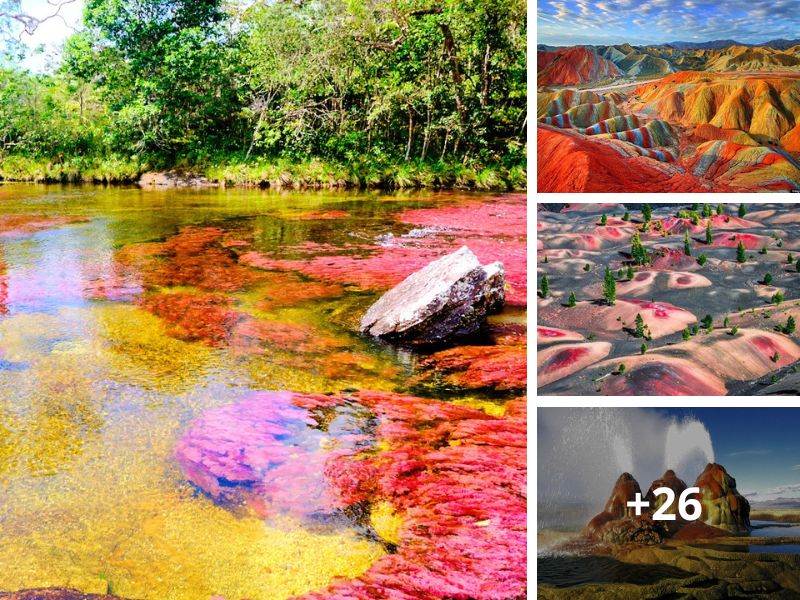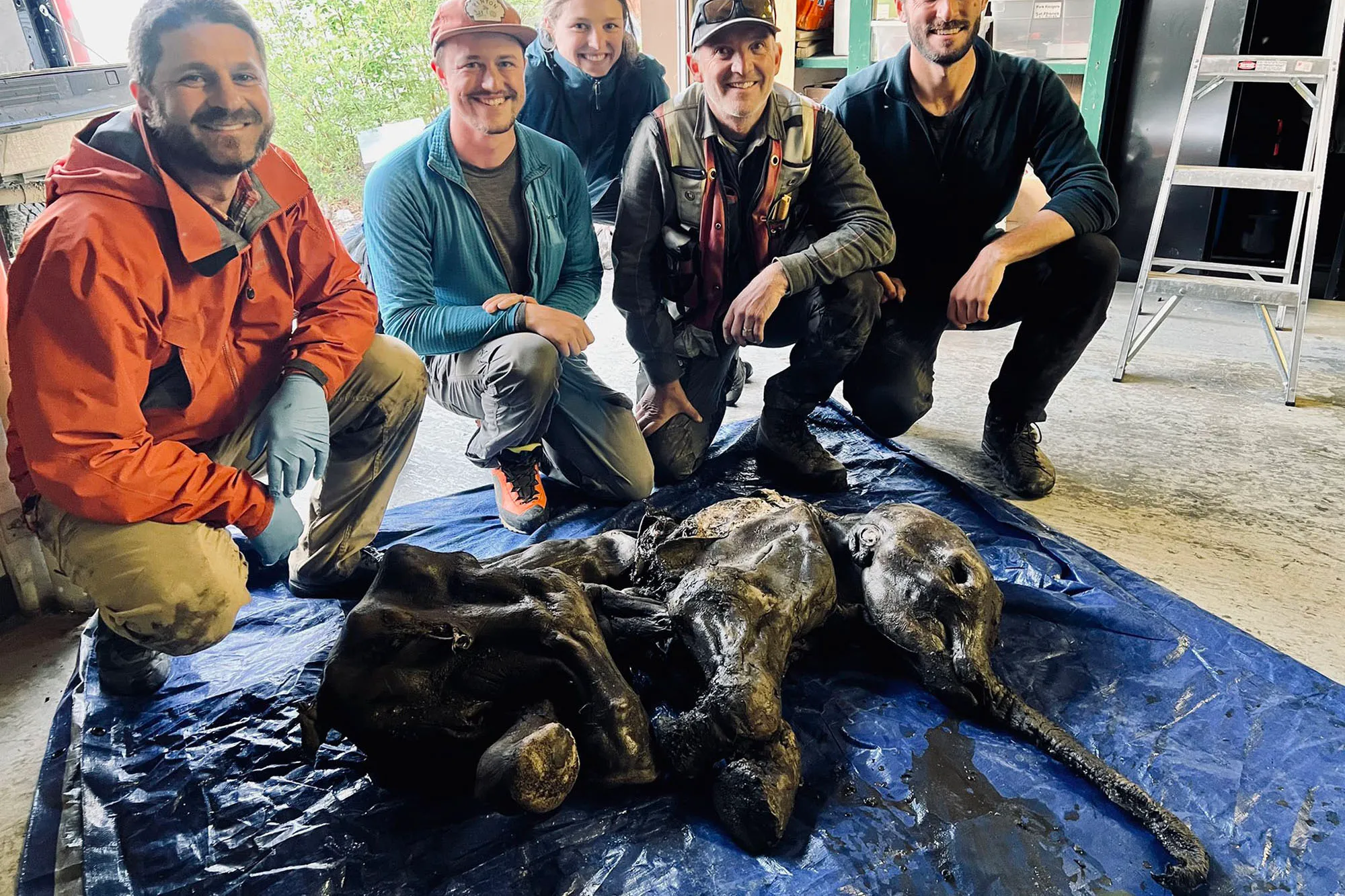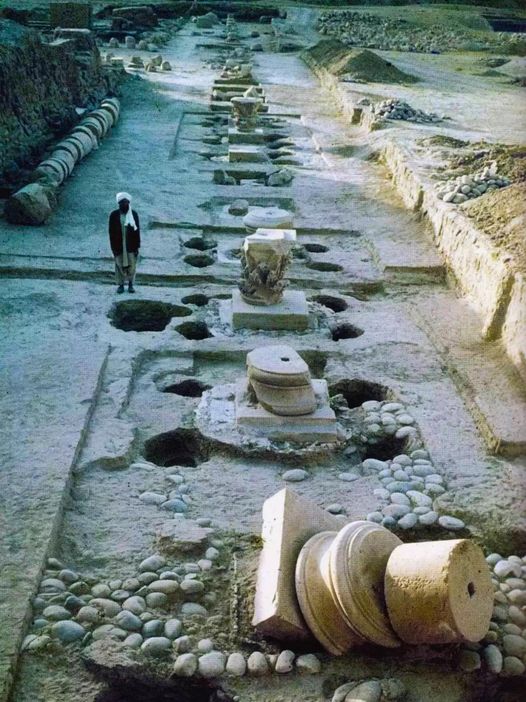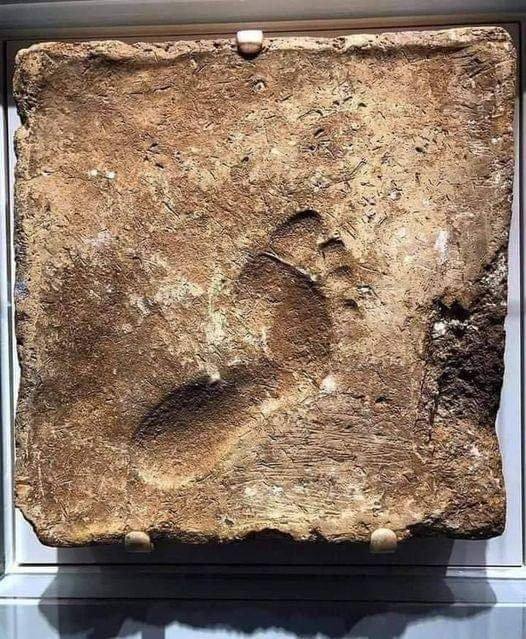Mother Nature has created a series of great masterpieces all over the world. Most of them have been discovered and honored by humans. Each work of art of that creation has its own beauty, unmixed, unlike any other. Let's join Toplist to admire the natural wonders with the most surreal beauty in the world through the following article.
1. Fly Geyser - Mars on Earth

The Black Desert (110 km long, 32 km wide) is part of the saltwater lake Laontan that has dried up. This lake existed as far back as 7000 BC (during the last years of the Ice Age). Inside this area there are many black cliffs, volcanoes and sparkling geysers. The most prominent of them are the Fly geysers with strange beautiful colors created by minerals, seaweed and cyanobacteriae (bacteria with green and blue colors).
The Fly geyser is not a completely natural phenomenon. In 1916, the owner of a private ranch drilled a well in the hope that the desert would turn into fertile grassland, when he accidentally hit a pocket of geothermal water. However, it was only in 1964 that hot water began to spew out on the surface of the well.
With the perfect combination of vibrant colors, light and beautiful views, the Fly geyser has sparked endless inspiration for photographers around the world to create photos. Surely visitors will never forget the strange and beautiful images like on Mars when coming to Fly geyser, Nevada. Every year, this tourist destination attracts thousands of tourists to visit and learn.
2. Son Doong Cave - The World's Largest Cave

Son Doong belongs to Phong Nha - Ke Bang National Park, Bo Trach District, Quang Binh Province. Phong Nha - Ke Bang National Park has the oldest limestone mountain system in Asia, formed 400 to 450 million years ago. The analysis of fossil sediment samples determined that Son Doong cave formed relatively young - dating back to 3 million years old. Son Doong formed on a fault of the Truong Son mountain range and was eroded by the Rao Thuong river over millions of years, forming a giant tunnel beneath the limestone mountains. Cracks in the ceiling of the cave were corroded and subsided, forming large sinkholes that opened to the outside. Drops of water falling from the ceiling over millions of years create cave pearls the size of baseballs. Inside that magnificent space is a separate world, a rare natural wonder that surprised the conquerors of Son Doong.
During the first survey, the British Royal Caving Team had to return because it could not overcome the giant 90m high stalactite wall near the end of Son Doong cave - known as the Vietnam Wall. Until the second return with full specialized equipment in 2010, the group of cave experts was able to overcome the giant stalactite wall to get out of the cave. It was not until this time that the survey team confidently claimed to have found the largest cave in the world. The length of Son Doong cave is nearly 9km, in some places the ceiling height is up to 200m, 160m wide, big enough to accommodate a neighborhood in New York with 40-story buildings. With an estimated measured volume of 38.5 million cubic meters, Son Doong surpassed Deer Cave in Malaysia to become the largest natural cave in the world.
3. Salar de Uyuni . Salt Fields

Located in southwestern Bolivia, in the province of Daniel Campos, near the Andes mountain range at an altitude of 3,650m, Salar de Uyuni is the best gift that mother nature has bestowed on the beautiful country of Bolivia. With an area of 10,582 square kilometers, Salar de Uyuni is known as the "Land of the Best" - The largest salt flat in the world, the largest storage place for lithium, the best place in the world to measure the size. artificial satellite. When the rainy days come and summer comes, the field is always flooded, inadvertently turning this place into a giant mirror. The blue sky, white clouds and natural scenery are reflected in the mirror, creating a magical beauty that is realistic and vivid to every detail. If anyone has been to this place, they will be overwhelmed by the enchanting beauty of Salar de Uyuni.
Coming here, you can not only admire the beautiful scenery, see the scenery of the people here harvesting salt, but also participate in some interesting activities such as playing golf, skateboarding, hot air balloon racing... or you can relax. pose for pictures as a souvenir. A special thing when you come to Salar de Uyuni is that the surrounding guesthouses and hotels are all made from salt. After an interesting tour and fun, you can easily find those unique salt hotels to rest, relax and explore all the decorations and salt products. It will be an interesting trip for you.
4. Mount Roraima

Mount Roraima is located in the territory of the majestic Canaima National Park, with an area of up to 30,000 km2 and the highest peak is also the natural boundary between Guyana and Brazil. This mountain is home to and produces many of the world's oldest geological plates dating back to about 2 billion years before the pre-Cambrian. Mount Roraima is the highest peak in the Pakaraima mountain range located in South America. This mountain was discovered by an English explorer in 1596. The peak is shaped like a giant iron. an area of 31 km2, covered by steep cliffs nearly 400m high. This is really a great place to visit for tourists from all over the world.
On the top of the mountain, rain occurs almost every day, these rains have contributed to washing away, eroding all the nutrients in the soil, making the trees here underdeveloped or the trees Very strange development creates a very special scene that nature has bestowed on this place. To get to the top of the mountain, there is almost only a unique path that is a natural staircase. Due to its complete isolation from the dense subterranean forest, one-third of Roraima's unique plant species live on top of the mountain.
Mount Roraima became known to many people in 1912 when Conan Doyle wrote the fiction "The Lost World". Not only that, the blurred scenery of Roraima with clouds looming, big and great, is also filled with many secrets about life about creatures, and even mysteries about creation. Everything about this place has created an extremely strong inspiration for the filmmakers and they decided to put this wonderful picture frame into the images in the famous animated movie "Up - Soaring". ".
5. Mount Zhangye Danxia

If you don't really set foot in this Zhangye Danxia mountain region, many people will probably think that it is just a photoshopped work. But this is a beautiful "unique" natural picture that nature favors. Coming to this place, visitors will see colorful streaks from red, yellow, orange to cold green, purple, brown... Zhangye Danxia National Park is located in Gansu province in the west. North of China is 518km wide. The Rainbow Mountains of China in Zhangye Danxia Topographic Geopark are a geological wonder of the world. China's famous mountains are known for their unusual colors that mimic the color of the rainbow over the overlapping mountain ranges.
This incredible natural masterpiece is due to natural factors such as rain, wind, erosion, oxidation combined with mineral elements to create extremely unique array of colors. It seems that nature got too excited when composing colors for the landscape of the Zhangye Danxia mountains. The warm orange streaks blend with each green band from the perennial bushes, striking against the blue background of the geology of the mountains here. Each mountain of this park has colors and textures that vary from bright red, chestnut, stone lemon, to yellow, orange, blue...
6. Lassen . Volcano National Park

Lassen Volcano National Park is located in Northeastern California in the western United States. Here, one can admire the unique geothermal features of Lassen National Park such as sulfur springs, bubbling mud pools. Lassen is located in the Cascades mountain range. The volcanoes here have all kinds of shapes such as dome volcanoes, pumice volcanoes, shield volcanoes and composite volcanoes. Although the terrain is volcanic, Lassen National Park is covered with verdant forests and grasslands, clear rivers flowing smoothly as if counting the time. Besides, there are clear blue lakes, adorning the beauty of this strange land…
In this national park, people find all four types of volcanoes commonly found in the world, including dome volcanoes, pyramidal pumice volcanoes, shield volcanoes and composite volcanoes. And the colorful sand dunes are formed by the oxidation of volcanic ash. This is also the most prominent point in Lassen garden. The red, yellow-orange colors of the sand dunes stand out and contrast with the black of the volcanic sand.
In addition to the strange beauty of multicolored sand dunes, here, one can admire many unique geothermal features of a volcanic national park such as sulfur springs, bubbling mud pools. Despite the volcanic terrain, the national park is covered with lush forests and grasslands, calm rivers, and clear blue lakes, adding to the beauty of this strange land.
7. Naica mine crystal cave

The giant crystal cave in Mexico is located 300m deep underground, containing columns of CaSO4 crystals up to 10-11m high. The cave was discovered in 1974 by a Naica silver miner, southeast of the city of Chihuahua. But it wasn't until 2000 that brothers Juan and Pedro Sanchez drilled a tunnel leading to this cave and the sights are truly fascinating. the new is opened. The Crystal Cave is actually a kingdom of giant crystal columns sprouting from the cliffs and bottom of the cave. The largest crystal block is up to 11m long and weighs 55 tons.
The researchers believe that the largest crystals of the cave accumulated more than 500,000 years ago. Crystals in the cave were able to reach such enormous sizes thanks to a combination of many natural conditions over the past 10,000 years. In the cave, the temperature often reaches nearly 58 degrees Celsius, with humidity about 90-99%. The air here contains acid and no natural light, so it is very inhospitable to humans.
8. Wadi Rum Valley

Wadi Rum, also known as the "valley of moonlight", is located in the southern part of Jordan, about 300km from the capital Amman, an arid desert land but surrounded by sandstone mountains forming the A valley of fanciful beauty The breathtaking scenery of granite and sandstone mountains flanking the red sand valley in this natural wonder attracts visitors.
Over millions of years, the impact of rain, wind, dust, etc. The sandstone mountains here have been eroded into extremely unique and mysterious shapes. Vast sand valleys turn from golden brown to dark red, oases surround jagged mountains and wind-eroded cliffs. Under the influence of iron oxide, the red color stands out on the color palette of Wadi Rum.
To this day, visitors can still see many traces of nomads from thousands of years ago. These are frescoes depicting hunting scenes carved on the rocks in the cave walls... Red sand dunes are present in many places, but the highest and most attractive sand dunes are located east of Wadi Rum village, the village of the Bedouin tribe in the red desert.
9. Antelope Canyon - Arizona, USA

Antelope Canyon - also known as Antelope Canyon - is only about 15 minutes by car from Page, Arizona. But as Navajo territory, this place is not to be entered arbitrarily. Antelope Canyon is formed from beautiful wavy lines that mother nature "sculpted" over a period of 5 million years. Stepping inside the canyon, visitors enjoy a party with a harmonious combination of light and color and enchanting spiral walkways.
With a fairly deep and narrow canyon, Antelope Canyon is made up of 2 cliffs with magical curving shapes, including many different geological layers, mainly sandstone and limestone. The Antelope Canyon can be described as a large cleft forming two distinct sections.
Antelope Canyon was formed by the erosion of sandstone, mainly by flash floods. The structure consists of many different geological layers, mainly sandstone and limestone. In particular, Antelope's sandstone is a rock formed from fossil sand dunes of the vast Jurassic desert before, similar to today's Sahara desert.
10. Cano Cristales river, Colombia

The Cano Cristales River, Colombia is a river in the province of Serrania de la Macarena, Colombia, and a tributary of the Guayabero River. The river is often called by another name "River of Five Colors" or "Liquid Rainbow", attracting many tourists because the color of the river is very beautiful.
This is originally a tributary of the Guayabero River, with a length of about 100 km. At the time of a few months of the year, this river will bring different colors such as red, yellow, green, blue, and black, creating a magical and rare scene in the middle of South America.
This is not only a famous Colombian tourist destination but also a unique natural wonder of the Creator for the people of this country. Because every year at the time of the change of seasons, the river water shines with colorful colors that captivate people's hearts.










